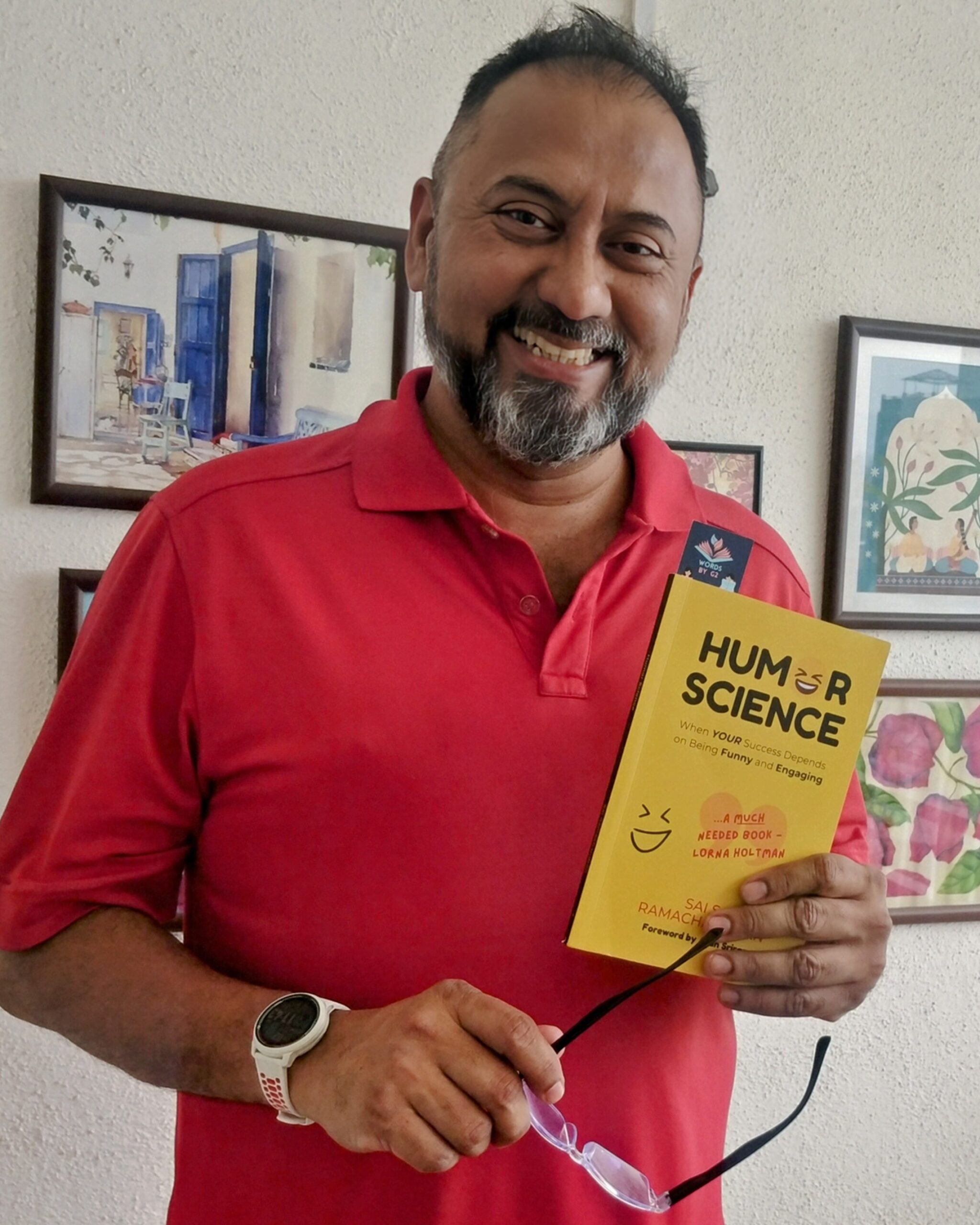For those who want to know why they laughed, long after the moment has passed.

That’s me with the book, looking at the camera as if it is a plate of momos!
Until recently, Sai S. Ramachandran was just another LinkedIn contact I couldn’t quite place, a name that occasionally cropped up between posts about productivity hacks and people receiving awards for breathing efficiently. But then he did something rather drastic, which one usually, and fervently hopes one’s social media connections not to do—because then, you have to pretend to like them a little more than you honestly would be comfortable with, if you know what I mean. He wrote a book.
Now, when people you know write books, there’s a protocol. You buy the book. You say nice things. You post a selfie with it, ideally with a caption that includes the words “proud,” “insightful,” and “must-read.” You don’t, under any circumstances, actually read the thing.
And yet I did.
“Humor Science” a 152-page exploration of why things are funny (or, more often, why they aren’t), is what happens when someone decides to apply scientific rigour to the art of making people laugh. Sai is not just a comic in the sense that a man in Crocs driving a Honda Civic is a “driver.” No, he’s the sort of comic who, had he lived in 1886, would have piloted a Benz Patent Motor Car while being referred to as “Engineer,” and known not just how to drive the contraption but how to strip it down, replace the crankshaft, recalibrate the timing, and rebuild it using only a spanner, candlelight, and pure spite. He doesn’t just know jokes. He knows their engine layout, torque curves, and how to restart them when they stall mid-delivery.
The book is written in a generously spaced font, presumably in anticipation of its future life as an airport bestseller or emergency coaster. Still, it’s a brisk, idea-packed read. I made notes. I even asked ChatGPT to write this review. What emerged was so painfully unfunny, so spiritually vacant, that I was forced to rewrite the whole damn thing myself. Sai, you now owe me a plate of momos.
A few key takeaways, for those unwilling to part with ₹279 (roughly the cost of three plates of said momos or one lukewarm Americano in Pune):
- A joke, like a good poem or a fraudulent investment scheme, lulls you in with trust before dropping you through a trapdoor. That sudden drop from familiar to absurd is where the laughter lives. Or, occasionally, the lawsuit.
- “Elide” means to omit. It also means to join. Sai uses it both ways, which feels unnecessarily clever.
- Bob Saget had a mouth like a sailor with a thesaurus.
- Most truisms in comedy are, inconveniently, true. Grit matters. Authenticity sells. Timing is everything. Puns are still crimes against humanity. And if you ever feel “misunderstood” by your audience, it’s probably not because they’re slow.
- Sai gifts us the acronym S.I.E.R.R.A.S.: Surprise, Incongruity, Embarrassment, Recognition, Release, Ambiguity, and Superiority. It’s unclear whether the extra “S” was added for symmetry, flourish, or as a quiet nod to our beloved Prime Minister’s penchant for the same.
The book also detours into topics that are decidedly unfunny, which, of course, is entirely the point. The fragility of free speech. Court cases about jokes. The great Indian hypocrisy of pretending to be culturally refined while watching YouTube roasts. Sai tackles all of it with a light touch and the dry resignation of someone who has seen one too many panel discussions on “the limits of satire.”
He ends with some technical commentary on joke classifications, and then, in a move that can only be described as charmingly analogue, offers his email address not in a normal format, but as humor DOT science AT ramchandr DOT in. Presumably to ward off spambots. Or readers. Possibly both.
So, is the book funny? In places. Like a highly technical manual for a Japanese precision machine, but translated from Japanese using Google Translate. Except in this case, Sai meant to be funny. Or so I hope.
Is it smart? Painfully so.
Was it worth my time?
Well, I read it cover to cover, made notes, outsourced the review to a robot, rejected the result in horror, rewrote it from scratch, and am now pretending I came up with all of this on my own.
So yes, it was an excellent use of someone else’s time.
Should you buy it?
Well, have you had your fill of momos?



















